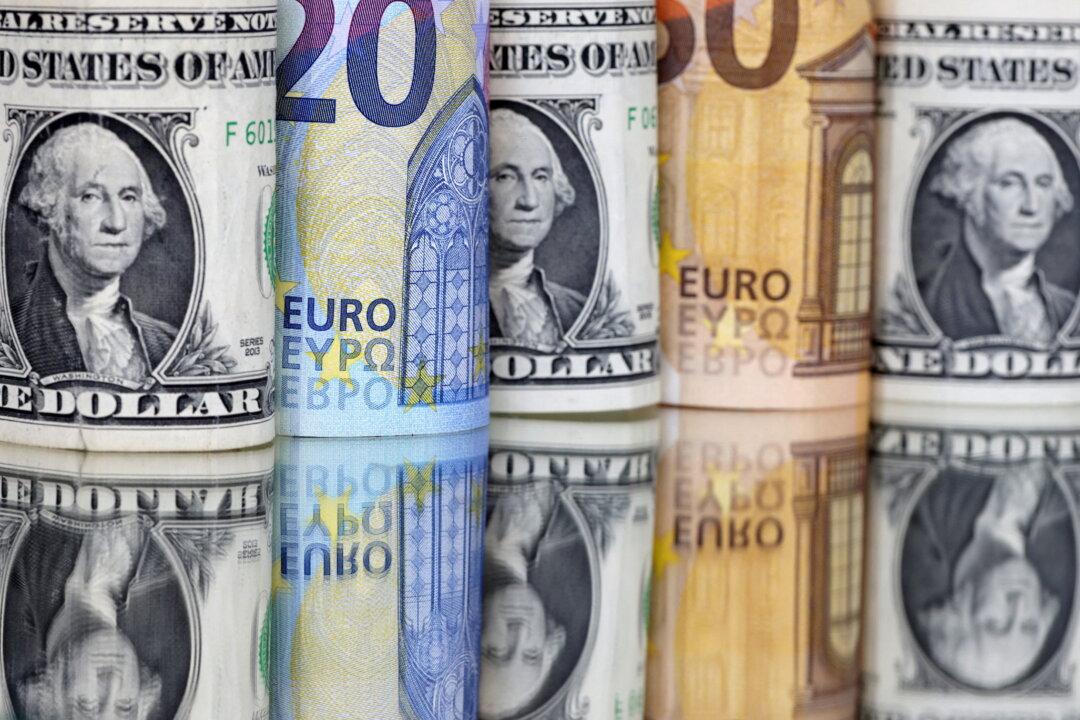LONDON—The euro was on track for its biggest one-day drop since September as German inflation eased in December, while the dollar rose to a two-week high with focus turning to the Federal Reserve’s minutes from the December meeting.
The euro was last down around 1.3 percent against the dollar at $1.0526, its lowest level since Dec. 12, and on track for its biggest daily fall since Sept. 23 last year.





